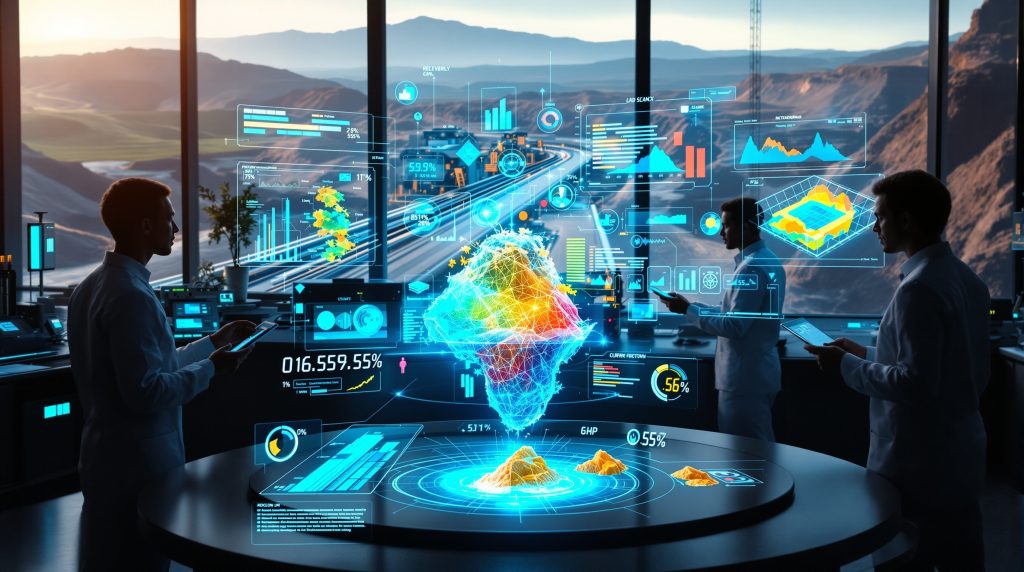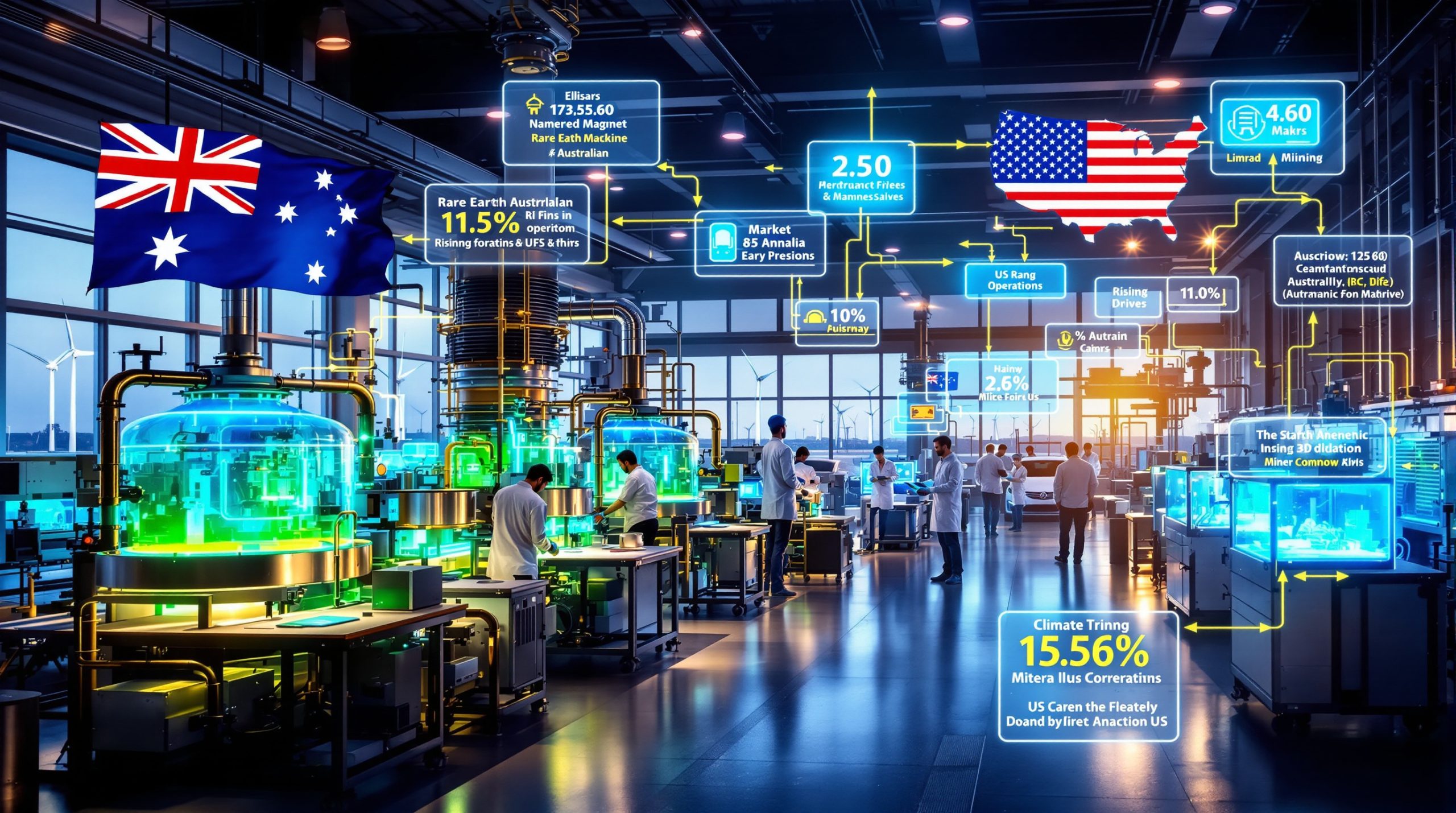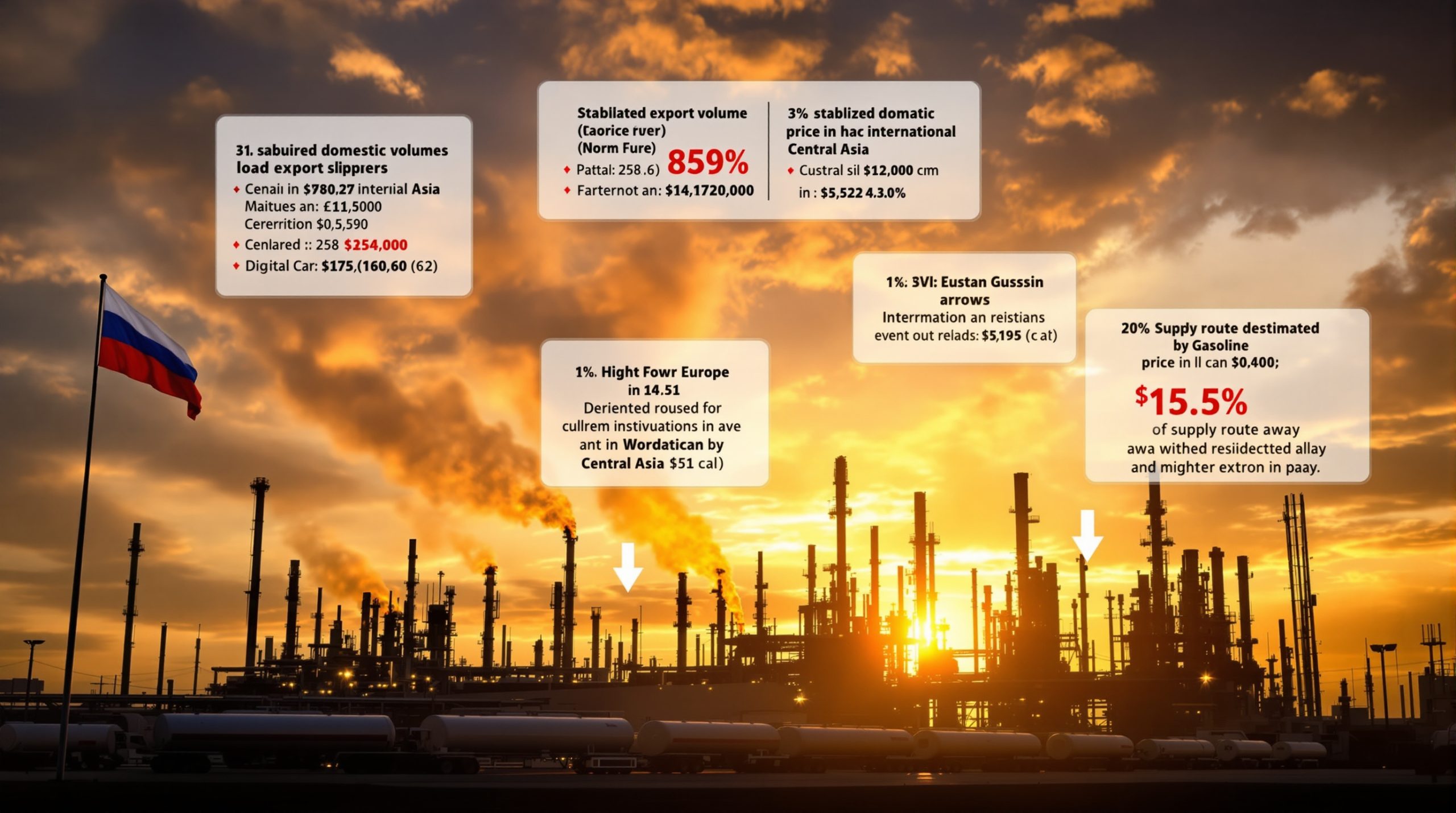What is Geometallurgy and Why is it Critical for Mining Projects?
Geometallurgy represents the integration of geological and metallurgical data to create predictive models that optimize resource extraction and processing. This interdisciplinary approach bridges traditional divides between geology and metallurgy, enabling more accurate forecasting of plant performance based on ore characteristics. In today's mining landscape, where margins are increasingly tight and stakeholder expectations are high, geometallurgy has evolved from a specialized field to a fundamental requirement for project success.
The discipline enables mining operations to identify processing challenges before they impact production, develop targeted mining sequences that optimize recovery and throughput, reduce operational risks through better understanding of ore variability, and support sustainable resource management through improved efficiency.
According to industry data, approximately 30% of new mining operations underperform relative to plan, highlighting the critical importance of comprehensive geometallurgical understanding. This underperformance often stems from insufficient characterization of ore variability and its impact on processing performance.
A troubling industry trend reveals that orebody knowledge budgets in geology typically exceed those in metallurgy by a ratio of 40 to 1, creating knowledge imbalances that can lead to costly surprises during production ramp-up. This disparity in resource allocation often means that processing challenges remain hidden until ore reaches the plant.
The Evolution of Geometallurgical Understanding
The core value of geometallurgy lies not in complexity for its own sake, but in understanding the specific orebody characteristics that directly impact recovery, product quality, costs, and plant performance. This practical focus ensures that technical work translates to operational value rather than remaining theoretical.
Modern geometallurgy emphasizes practical prediction models that operations teams can actually use, rather than complex systems that require specialized expertise to interpret. The goal is to develop tools that provide actionable insights for daily decision-making at the mine site.
How Has the Role of Geometallurgy Evolved in African Mining?
African mining operations face unique challenges including complex ore bodies, infrastructure limitations, and increasing pressure to demonstrate environmental responsibility. Geometallurgy has evolved significantly across the continent, moving from basic ore characterization to sophisticated predictive modeling that informs everything from drill planning to processing plant design.
Recent developments in African geometallurgical practices include implementation of hyperspectral core scanning for rapid mineral identification, development of region-specific processing models that account for local geological conditions, integration of water and energy efficiency metrics into geometallurgical planning, and collaborative research initiatives between mining companies and academic institutions.
The evolution of geometallurgy in Africa has been particularly important in addressing the continent's varied geological settings, from deeply weathered profiles in West Africa to complex polymetallic deposits in central regions. These diverse settings demand customized approaches rather than applying global templates without adaptation.
Regional Applications and Challenges
Many African operations have pioneered domain-specific approaches to account for extreme variations in weathering profiles, which can dramatically alter processing characteristics even within the same deposit. This regional expertise continues to develop as more operations recognize the value of localized geometallurgy conference africa insights.
The continent's sometimes limited infrastructure has actually accelerated innovation in field-based characterization methods, as operations seek efficient ways to gather critical data without relying on distant laboratories or specialized equipment.
What Makes the 2025 SAIMM Geometallurgy Conference a Landmark Event?
The 2025 Southern African Institute of Mining and Metallurgy (SAIMM) Geometallurgy Conference represents a pivotal gathering for mining professionals across Africa and beyond. Scheduled for October 14-15 at Glenburn Lodge and Spa near Johannesburg, the conference theme "Future-Ready Geometallurgy: Trusted Data, Advanced Tools, Smarter Decisions" reflects the industry's focus on data-driven operations.
The conference structure includes technical workshops on October 13 covering practical applications, two days of peer-reviewed presentations and panel discussions, technical site visits on October 16 to showcase real-world implementations, and networking opportunities with leading experts and practitioners.
This gathering arrives at a critical juncture for the mining industry, as operations face increasing pressure to improve efficiency while reducing environmental impacts. The conference provides a platform for sharing practical solutions to these pressing challenges.
Key Focus Areas of the 2025 Conference
| Focus Area | Topics Covered | Relevance to African Mining |
|---|---|---|
| Data Reliability | Sample representation, QA/QC protocols, data integration | Addresses challenges of remote operations and limited historical datasets |
| Advanced Analytics | Machine learning applications, geostatistical modeling, digital twins | Enables resource-constrained operations to maximize efficiency |
| Operational Integration | Mine-to-mill optimization, real-time decision support | Helps overcome infrastructure and supply chain challenges |
| Sustainability Metrics | Water and energy efficiency, waste minimization | Aligns with increasing ESG requirements for African projects |
The conference organizers have emphasized practical application over theoretical concepts, ensuring that attendees can implement learnings directly in their operations. This focus on applicable knowledge makes the event particularly valuable for technical decision-makers seeking immediate solutions.
Why is Domain-Based Testing Essential for Project Risk Management?
Domain-based testing represents a fundamental shift from traditional composite-based metallurgical assessment. Rather than relying on a few blended samples that may mask problematic ore characteristics, domain-based approaches systematically test representative samples from each geological domain.
Composites, while seemingly efficient, can blend away critical characteristics of ore that become problematic in actual plant operation. A composite sample that tests well in laboratory conditions may be hiding material properties or interactions that, when delivered to the plant in their natural state, create significant operational issues.
Systematic domain- or bench-scale sampling and testing is the only reliable way to expose these hidden risks before they impact production. If no problems are found, this approach simply confirms low risk and increases confidence in performance forecasts—a valuable outcome in itself.
Benefits of Domain-Based Geometallurgical Testing:
-
Early Risk Identification: Problematic ore types are identified before they reach the processing plant
-
Improved Capital Allocation: Processing equipment can be sized appropriately for actual ore variability
-
Enhanced Operational Planning: Mine sequencing can be optimized to manage challenging ore types
-
Reduced Commissioning Delays: Plant startup issues related to unexpected ore behavior are minimized
-
More Accurate Financial Forecasting: Production and recovery predictions reflect actual ore characteristics
When issues are identified early through domain-based testing, project teams have the opportunity to map their distribution, engineer appropriate solutions, or adjust mine plans—all at much lower cost than addressing problems after commissioning. This preventive approach transforms potential crises into manageable challenges.
A West African gold project that implemented comprehensive domain-based testing identified a previously unrecognized preg-robbing component in 15% of their ore body. By mapping this domain and developing specific processing protocols, they avoided potential recovery losses of up to 20% during early production years. This early detection converted what could have been a project-threatening issue into a manageable operational consideration.
How Can Mining Companies Implement Effective Geometallurgical Programs?
Implementing effective geometallurgical programs requires a structured approach that balances technical rigor with practical considerations. Success relies on genuine collaboration between geology and metallurgy teams, breaking down traditional departmental silos that often impede information sharing and coordinated planning.
For geometallurgy to create sustainable value, project teams must claim ownership and embed geometallurgical methodology into standard resource modeling, mine planning, and plant problem-solving routines. External consultants may provide valuable expertise, particularly when in-house experience is limited, but lasting results only occur when core technical teams integrate these approaches into their standard workflows.
The following framework provides a roadmap for mining companies looking to enhance their geometallurgical capabilities:
1. Baseline Assessment and Domain Definition
- Review existing geological models and identify knowledge gaps
- Conduct preliminary mineralogical analysis to define potential processing domains
- Establish sampling protocols that ensure representation across all domains
- Develop a geometallurgical database structure that facilitates integrated analysis
2. Systematic Testing and Model Development
- Execute domain-specific testing programs focusing on critical processing parameters
- Analyze relationships between geological features and metallurgical responses
- Develop predictive models that link geological attributes to processing outcomes
- Validate models through targeted testing of representative samples
3. Operational Integration and Continuous Improvement
- Incorporate geometallurgical models into mine planning and scheduling systems
- Train operational teams on the application of geometallurgical insights
- Establish feedback loops between plant performance and model predictions
- Refine models based on reconciliation between predicted and actual outcomes
Joint investigation between geological and metallurgical teams is essential to trace the links between geological features (such as alteration, veining, mineral associations) and process responses (such as grinding, flotation, or leach performance). The resulting models must be straightforward enough for all stakeholders to understand, yet robust enough to support scheduling, reconciliation, and project decision-making.
What Role Does Technology Play in Modern Geometallurgy?
Technological advancements have dramatically expanded the capabilities and applications of geometallurgy. Modern practitioners have access to tools that enable more rapid, comprehensive, and accurate characterization of ore bodies than ever before.
The price of diagnostic testwork and analytical services has remained steady or even decreased in real terms over the past decade, even as most metal prices have increased significantly. This means the proportionate cost of comprehensive geometallurgical programs is smaller than at almost any time in recent memory, improving the value proposition for these investments.
While technology enables new capabilities, industry experts emphasize that tools like hyperspectral scanning, automated mineralogy, integrated data historian platforms, and advanced geostatistics add value only when used with discipline and purpose. The focus must remain on answering operational questions rather than generating data for its own sake.
Transformative Technologies in Geometallurgy:
-
Automated Mineralogy Systems: Provide detailed quantitative data on mineral associations and liberation characteristics
-
Hyperspectral Imaging: Enables rapid identification of alteration minerals and processing-relevant features
-
Machine Learning Algorithms: Identify complex patterns and relationships between geological and metallurgical parameters
-
Digital Twin Technologies: Create virtual replicas of processing circuits to simulate performance across different ore types
-
Integrated Data Platforms: Connect geological, mining, and processing data to support holistic decision-making
Investing in high-resolution scanning or large datasets provides little benefit if the results aren't analyzed and applied through coordinated effort and site-relevant questioning. Even basic, well-planned, domain-based testwork adds more operational value than sophisticated technical reports or models that cannot be integrated into daily decision-making.
How Does Geometallurgy Support Sustainable Mining Practices?
Geometallurgy plays an increasingly important role in advancing sustainable mining trends by enabling more efficient resource utilization and reduced environmental impacts.
By providing a deeper understanding of ore characteristics and processing behavior, geometallurgy allows operations to optimize energy and water consumption, reduce waste generation, and improve metal recovery—all critical components of environmentally responsible mining. These improvements directly support ESG (Environmental, Social, Governance) objectives that are increasingly important to investors, communities, and regulators.
Sustainability Benefits of Geometallurgical Approaches:
-
Reduced Energy Consumption: Better understanding of grinding properties allows optimization of comminution circuits, which typically account for 30-50% of processing energy
-
Water Conservation: Predictive models of ore behavior enable water recycling strategies tailored to specific processing challenges
-
Waste Minimization: Selective mining and processing based on geometallurgical domains can reduce waste generation
-
Chemical Use Optimization: Reagent consumption can be predicted and optimized based on ore characteristics
-
Enhanced Resource Recovery: Improved recovery rates mean more metal production from the same resource footprint
With capital and operating constraints magnified by ESG considerations and external pressures, there is little room to fix metallurgical performance issues on the fly. Geometallurgy provides the predictive tools needed to design operations that meet sustainability targets from the start, rather than trying to retrofit solutions later.
What Are the Economic Implications of Geometallurgical Investment?
The economic case for geometallurgical investment is compelling, particularly in today's operating environment where project margins are under pressure and stakeholder expectations are high.
Fifteen or twenty years ago, projects could often succeed with limited geometallurgical testwork due to higher grades, more forgiving economics, or simply by oversizing plants and staffing them with experienced operators who could resolve issues after startup. That approach was viable when economic headroom for mistakes existed. Very few projects today can sustain that kind of cushion.
New processing plants rarely have capital headroom for substantial over-design. Investors, owners, and boards demand throughput at nameplate capacity and steady-state operation with minimal deviation from feasibility forecasts. With these tight constraints, geometallurgy has shifted from a technical luxury to a fundamental business requirement.
Economic Benefits of Comprehensive Geometallurgical Programs:
| Benefit Category | Typical Impact | Value Driver |
|---|---|---|
| Improved Recovery | +2-5% | Direct increase in revenue from same ore tonnage |
| Reduced Ramp-up Time | 3-6 months | Earlier revenue generation and faster return on capital |
| Processing Optimization | 5-15% throughput increase | Higher production from same capital investment |
| Risk Reduction | Varies by project | Lower financing costs through demonstrated technical diligence |
| Operational Flexibility | Strategic value | Ability to adapt to changing market conditions |
In today's project environment, the margin for error is narrow, and operational mishaps can have long-term impacts on company reputation and asset value. Remediation after the fact is rarely possible, making preventive approaches like geometallurgy not just technically sound but economically essential.
Testwork budgets are frequently trimmed to reduce perceived upfront costs, only for those savings to evaporate once ramp-up delays, missed forecasts, or even project write-offs occur due to unforeseen orebody behavior. The economics of geometallurgical investment must consider these risk factors rather than focusing solely on direct program costs.
What Challenges Do Mining Companies Face in Implementing Geometallurgy?
Despite its clear benefits, implementing effective geometallurgical programs presents several challenges that mining companies must address:
Common Implementation Challenges:
-
Organizational Silos: Traditional separation between geology and metallurgy departments can impede collaboration
-
Data Integration: Connecting disparate datasets from exploration, mining, and processing requires specialized systems
-
Skills Gaps: The interdisciplinary nature of geometallurgy demands professionals with cross-functional knowledge
-
Investment Timing: Pressure to reduce upfront study costs can lead to underinvestment in geometallurgical work
-
Standardization Issues: Lack of industry-wide standards for geometallurgical testing can complicate interpretation
Many operations bring in geometallurgy as an external service with limited internal follow-through. This approach rarely delivers sustainable value over the project lifecycle. External expertise has its place, particularly when building capabilities, but lasting results come from internal ownership and integration.
Strategies for Overcoming Implementation Barriers:
- Establish cross-functional teams with clear accountability for geometallurgical outcomes
- Invest in integrated data management systems that facilitate information sharing
- Develop internal training programs to build geometallurgical capabilities
- Benchmark geometallurgical investment against industry best practices
- Participate in collaborative research initiatives to advance standardization efforts
In practice, teams often spend too much time debating whether geometallurgy is necessary and not enough on actually executing the work to minimum standards. This hesitation creates risk, as operations cannot know if their ore is truly benign without proper sampling and testing. Early detection of issues translates directly to risk reduction and improved project certainty.
How Can African Mining Operations Benefit from the 2025 Conference?
The 2025 SAIMM Geometallurgy Conference offers specific benefits for African mining operations looking to enhance their technical capabilities and operational performance:
Value Propositions for Conference Participants:
-
Knowledge Transfer: Access to latest methodologies and case studies relevant to African geological settings
-
Networking Opportunities: Connections with experts and practitioners facing similar challenges
-
Technology Exposure: Demonstrations of new tools and technologies applicable to African operations
-
Skills Development: Workshops designed to build practical geometallurgical capabilities
-
Collaborative Opportunities: Potential partnerships for research and development initiatives
The conference provides an important opportunity to observe current best practices, recent advances, and directly applicable tools. The program includes trusted data methodologies, practical decision-support platforms, relevant case studies, and workshops for those wanting to refine geometallurgy application at their operation.
For operations with limited in-house geometallurgical expertise, the conference represents a valuable opportunity to build connections with specialists and learn from peers who have successfully implemented these approaches in similar geological and operational contexts.
FAQ: Key Questions About Geometallurgy in African Mining
Is geometallurgy only relevant for large mining operations?
No, geometallurgical principles apply to mining operations of all sizes. While comprehensive programs with advanced technologies may be more common at larger operations, even small mines can benefit from basic geometallurgical approaches such as domain identification and targeted testing. The scale and sophistication of the program should be proportional to the complexity of the ore body and the economic stakes involved.
How early in a project should geometallurgical work begin?
Ideally, geometallurgical characterization should begin during the exploration phase and continue throughout the project lifecycle. Early-stage work focuses on identifying potential processing domains and critical variability factors, while later stages involve more detailed testing and model development. Starting early allows for the progressive buildup of knowledge that informs each stage of project development.
What is the typical return on investment for geometallurgical programs?
While returns vary by project, industry experience suggests that comprehensive geometallurgical programs typically deliver returns of 5-10 times their cost through improved recoveries, optimized processing, and risk reduction. The highest returns often come from identifying and addressing potential processing challenges before they impact operations.
How does geometallurgy relate to ESG (Environmental, Social, Governance) considerations?
Geometallurgy directly supports ESG objectives by enabling more efficient resource utilization, reduced energy and water consumption, and minimized waste generation. Additionally, the improved predictability of operations that comes from good geometallurgical understanding helps companies meet production commitments to stakeholders and maintain social license to operate.
What skills are needed to implement effective geometallurgical programs?
Successful geometallurgical programs require a combination of geological, metallurgical, statistical, and data management skills. The ideal practitioner has cross-disciplinary knowledge that allows them to understand the connections between geological features and processing outcomes. Team-based approaches that bring together specialists from different disciplines are often most effective.
Conclusion: The Future of Geometallurgy in African Mining
As African mining operations navigate increasing technical, economic, and social challenges, geometallurgy offers a powerful framework for optimizing resource development and ensuring project success. The discipline has evolved from a specialized technical field to an essential component of modern mining practice that directly addresses key business risks and opportunities.
The 2025 SAIMM Geometallurgy Conference represents an important opportunity for mining professionals to advance their understanding of best practices, emerging technologies, and practical applications. By bringing together experts from across the industry, the conference will help shape the future of geometallurgy in African mining and beyond.
For mining operations seeking to enhance their competitive position, improve technical outcomes, and demonstrate responsible resource development, investment in geometallurgical capabilities represents not a luxury but a fundamental requirement for success in today's challenging mining environment.
All major reporting codes demand that confidence in metallurgical modifying factors be assessed on the same basis as geological confidence. Meeting these requirements is not simply about compliance—it is about good business practice that protects value and reduces risk throughout the project lifecycle.
No project needs an over-engineered, academic geometallurgy model, but every project that intends to protect long-term value should integrate routine, domain-based testwork and maintain models founded in operating fundamentals. Teams must understand their technical risk profile and calibrate the level of work to meet it.
Furthermore, the increasing focus on mineral exploration insights and drilling program strategies requires robust geometallurgical understanding to maximize value from discovered resources. In regions like South Africa, effective South African beneficiation programs rely on precise geometallurgical characterization to optimize downstream processing.
Further Exploration:
Readers interested in learning more about geometallurgy and the upcoming conference can explore related educational content at the Southern African Institute of Mining and Metallurgy website.
Ready to Identify the Next Major Mineral Discovery?
Discovery Alert's proprietary Discovery IQ model delivers instant notifications on significant ASX mineral discoveries, transforming complex data into actionable investment insights. Understand why major mineral discoveries can lead to significant market returns by exploring Discovery Alert's dedicated discoveries page.




